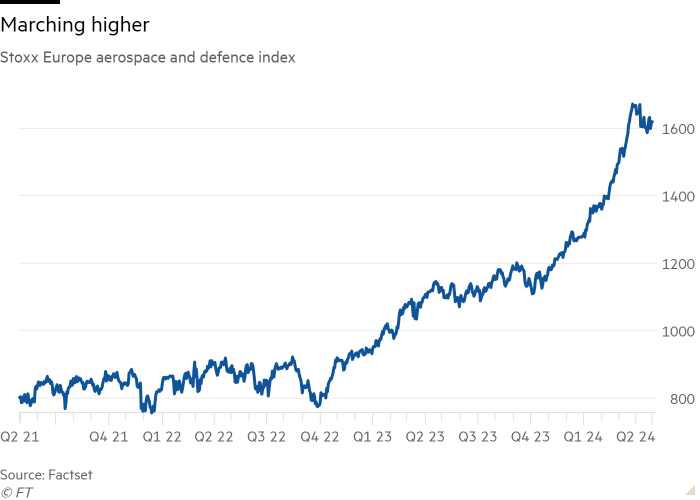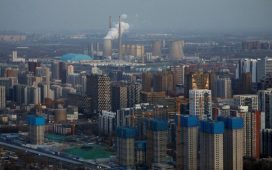Unlock the Editor’s Digest for free
Roula Khalaf, Editor of the FT, selects her favourite stories in this weekly newsletter.
EU defence stocks are losing ground. After a two-year tear, which saw the aerospace and defence index outpace the broader benchmark 10-fold, is the sector’s march higher over?
Government rhetoric and cold hard cash suggest not. European Commission president Ursula von der Leyen wants to “turbocharge” the European industry, spending more and spending at home.
Europe, along with the US and UK, is sending funds and hardware to Ukraine. Russia’s invasion kicked off the sector’s rally. Overall, military spending topped $2.4tn last year, or 2.3 per cent of economic output and a 6.8 per cent increase on the previous year, according to the Stockholm International Peace Research Institute.
As conflicts proliferate across the world, old kit needs replacing and modernising: half of Europe’s land systems and as much as four-fifths of land-based air systems are more than 30 years old, says McKinsey. Rearmament should push defence budgets up to 6 to 8 per cent of gross domestic product, according to Sash Tusa, analyst at Agency Partners.
Contractors’ order books illustrate the tale: Italy’s Leonardo is forecasting new orders of €105bn over the next five years. That equates to €19.5bn this year, up from €17.3bn in 2022. About 23 countries met Nato’s target of a minimum one-fifth of defence budgets going on equipment in 2022. In the UK’s case it was nearly one-third; in Hungary nearly half.
With sales rising so is profitability. Germany’s Rheinmetall is targeting operating margins of 14 to 15 per cent this year, up from an already-expanded 12.8 per cent in 2023. France’s Safran, having lifted operating margins by 100 basis points to 13.6 per cent last year, is looking at 14.5 per cent in 2024.

Valuations have soared. Europe’s aerospace and defence sub-index recently hit a historic high. Shares in Rheinmetall — which peaked the day before analysts at Goldman Sachs urged caution on the sector earlier this month — are trading on an enterprise value of 20.6 times next 12 month’s ebitda, up from about 12 to 13 times in the two years preceding the war.
Traditional constraints on investor demand are still abating. The idea of defending Davids against Russia-sized Goliaths meant the ESG lines were always blurred for investors in the sector. But lest doubters remain, the UK government, in a joint statement with the Investment Association, last week underlined the case. It stated categorically that “investing in good, high-quality, well-run defence companies is compatible with ESG considerations”.
Still, 70 per cent of European ESG equity funds have no exposure to defence and aerospace, down from 75 per cent in January 2022, according to Morningstar Direct. A turbulent global backdrop suggests the recent sell-off is less warning signal than buying opportunity.




